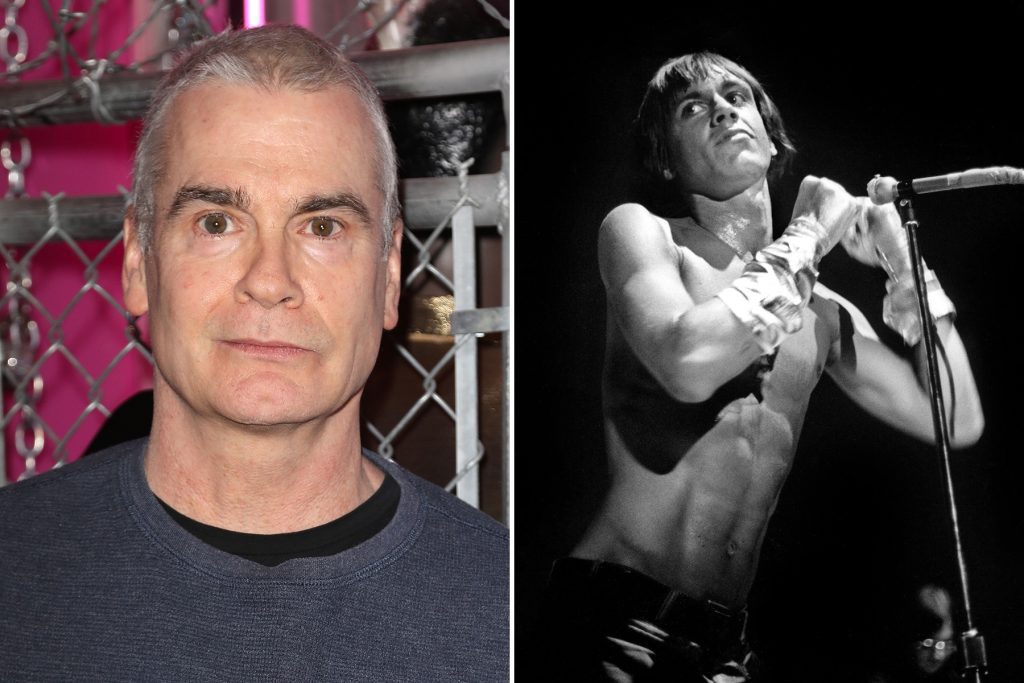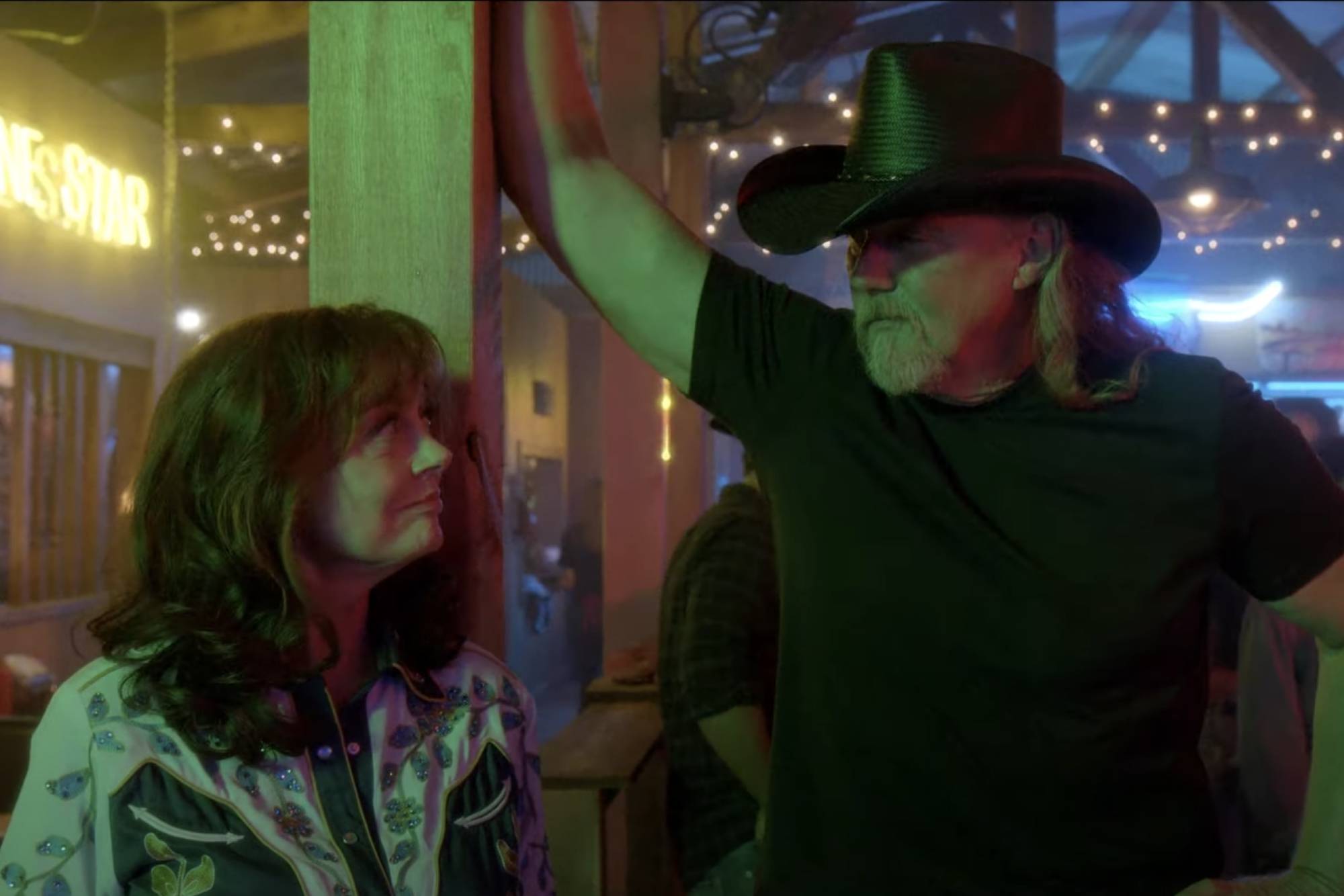
‘Attitude, Intensity, Ferocity’: Henry Rollins on How the Stooges’ ‘Fun House’ Changed His Life
“Do you long to have your mind blown open so wide that it will take weeks for you to pick up the little, bitty pieces?” Charles Burton asked in his IndieLand review of the Stooges’ second album, the 1970 proto-punk holy grail Fun House, all but daring readers to give it a spin. Since Fun House came out, 50 years ago this week, the album’s seven tracks — from the grimy stomp of “Down on the Street,” “Loose,” and “T.V. Eye” to the sinister slither of “Dirt,” the wild shimmy of “1970,” the leering minimalism of the title song, and the free-noise meltdown of “L.A. Blues” — have had that same shattering effect on generations of listeners.
Among those who have had their minds blown to bits by Fun House is Henry Rollins, former Black Flag and Rollins Band vocalist, and author of the illuminating liner notes for a new super-deluxe 50th-anniversary version of the record, out July 31st. Spread across a whopping 15 LPs and two seven-inches, the set features a newly remastered version of the original album plus the vinyl debut of The Complete Fun House Sessions, originally released on CD in 1999 and containing every single studio take that the Stooges put down at Elektra Sound Recorders in May 1970, plus between-song banter. The set also includes two mixes of the “Down on the Street” single, and a full live show recorded at New York club Ungano’s in August 1970, and originally released as a stand-alone album in 2010. Fittingly, the box is limited to 1,970 copies.
“As I said in the liner notes, some people might think that the box set is an extended version of the album,” Rollins says. “I think the album is an abbreviated version of the box set. … As a music fan, you can put [Fun House] on and go, ‘Wow, I like that record,’ and I will believe you. But if you want to connect with that record on a whole other level, play the box set, and then tell me how you connect with it.”
Weaving in excerpts of new interviews with Danny Fields, who signed the Stooges to Elektra, and Fun House producer Don Gallucci, Rollins’ liner notes lay out how an album that listeners might think of as a primal eruption was actually a meticulously worked out statement of purpose. Playing live in in a studio stripped of all its usual sound isolation, the band — vocalist Iggy Pop, bassist Dave Alexander, and brothers Ron and Scott Asheton on guitar and drums, respectively — recorded take after take of each song, including 15 of “Down on the Street” and a whopping 28 of “Loose.” Tiny changes in everything from tempo to lyrics (listen out for Pop singing that he’s “flying on a red-hot weenie” in early takes of “Loose”) end up having a monumental effect on the end results.
“As primal as they are, they’re very in touch with what they were after,” Rollins says. “And so for a band who people said, ‘Oh, they can’t play’ — I don’t think you could put them in a different band, but I think they could play Stooges music really well.”
Here, Rollins talks through his personal trip into the Stooges’ Fun House, how hearing the complete sessions changed his view of the LP, and why, around 40 years after he first heard it, it’s still his favorite album of all time.
I think [Black Flag bassist-cofounder Chuck Dukowski] was thinking of me as maybe a singer in the band at some point, because I got to hang out with those Black Flag guys, and when I met him, he said, “Man, you should check out the Stooges.” Chuck would actually call me. I’d get home from my job at the ice-cream store, my phone would ring — it’s like having Roger Daltrey call. He said, “So have you been listening to the Stooges? Did you get Fun House?” I’m like, “Well, I just forgot to do it.” He’s like, “Man, you’ve got to check out the Stooges. …” He’s kind of grooming me, like, “Get ready.”
Then I audition, get the thing and I’m in the van with them and they said, “OK, did you get on that Stooges thing?” I went, “Not yet.” Then Chuck went, “OK, so here’s [the MC5’s] Kick Out the Jams, here’s Fun House, and here’s the first Stooges album. And here’s the tape deck in the van.” We’re somewhere — we’re in Michigan, we’re in Illinois. And Chuck said, “Get these records listened to. If you don’t love them, you’re kind of going to have a hard time relating to this band and what our thing is about.”
And I sat and listened to the Stooges. It was just me and that music. And I cannot explain how hard that music hit me, where I think it’s safe to say [there was] no other first time hearing a record where I had the same reaction. Like when I first heard the Damned, I was like, “Wow, love that band.” Or the Ruts. You know, “Wow, the Clash, that’s cool.”
When I heard Fun House, I don’t think I made a single sound. It’s like discovering carbon. It’s like the first time you go, “What’s that?” “It’s called rain.” “What’s this?” “Water, drink it.” You come upon a truth that’s so large … It was like someone hit me with a pickup truck. That’s kind of what Fun House did to me, where everything aligns, and you go, “Oh, punk rock, rock & roll, attitude, intensity, ferocity,” and, “This is it: Iggy is the guy, the Stooges are the band, and Fun House is the record. And anything I’m going to do is going to be quaint compared to this, because I just wasn’t born with what this record is doing.”
It was one of the few things in my life I’ve been right about: I’m never going to be that good. I heard that record and I’ve never gotten over it. It became my favorite record the moment I heard it. And I loved the first [Stooges] album and I loved Kick Out the Jams. But Fun House did a thing to me where it realigned what I thought of guitar-oriented music.
“Fun House became my favorite record the moment I heard it.”
‘Cause I was raised on arena rock. So I’d seen Zeppelin and Van Halen and loved all that stuff, and got way into punk rock. That changed my life. And then I heard the Stooges. It didn’t make me hate the punk rock. It just made me understand: “Oh, now I see why the Damned covered a Stooges song on their first record; now I see why the Sex Pistols, a Stooges song is a B side.” It occurred to me that they were kind of the first stone that hit the monolith at the beginning of 2001, or something. You’re like, “Oh, so this is the mouth of the river.”
What you hear [on the Stooges’ 1969 self-titled debut] is basically a young blues band who can kind of jam out when they have to. But because of the first album, they actually got shows. And all the way up until the making of Fun House, they went out and played and played and played. And all of them got better, especially the Ashetons, Ron and Scott.
And so in that time, they really woodshedded, and they actually started writing songs. And so I think what you see on Fun House is a band that got the chance to not have to play, like, once every other weekend. They’re doing gigs like a real working band. And from that, they got those songs. And what you hear on the Fun House record is basically their live set almost in the order of appearance. “Loose” started the set, but Gallucci thought that “Down on the Street” should start the record. But he basically recorded them, as I say in the liner notes, as they set up live … gave the singer a microphone on a mic stand and said, just do the set. And he just got out of the way basically.
In ’81, ’82, there was a Trouser Press that had a thing on the Stooges and Fun House and how Gallucci put them all in live, doing a song a day. I didn’t know there were that many takes. There’s, like, 28 takes of “Loose” — good grief. When I heard Fun House, I didn’t even think about how they made it. I was too busy picking my jaw up off the floor and trying to figure out why I was even going to try and be in a band.
But the revelation for me was when you hear take after take — and I think Gallucci said this — he said, “This is a real band’s band, and they’ve got real chops, and they were after something.” He said, “It wasn’t me telling them to do it again. And it wasn’t me telling them that was the take.” He said, “By the third day, I was just kind of on their wavelength.” And I said, “How did you know that was the take?” He said, “Oh, we all knew. They just stopped playing the song. We all looked at each other, I looked at them, and the lightbulb went on.”
And I’m not a spiritual person. I just don’t have any of that in me. But on a couple of nights, I was almost in tears listening to the thing on vinyl — I think to the multiple takes of “1970,” where it becomes almost this mantra. And during all the takes of “Dirt,” where it’s just so beautiful. It’s, like, rapturous. And I wrote Scott and Ron’s sister, Kathy, in real time. I said, “I’m listening to this and I’m just overcome. And you’re the only person I can really have this conversation with.”
“I compare Fun House to A Love Supreme or Kind of Blue.”
There’s so much to say about the perfection of the record. You know, I’ve heard a few records in my life, and I compare [Fun House] to [John Coltrane’s] A Love Supreme or [Miles Davis’] Kind of Blue. I can’t make any real comparisons in rock because [the Fun House sessions] appear to me more of a jazz thing, where, with Coltrane or Miles, there was just that ridiculous, perfect sculpture with every take. I can’t make any comparisons in rock where you hear a band that played live in the studio and got those results. Where, as Don said, those songs were cut from one stone. They were of a piece. And there’s hardly any overdubs on Fun House. There’s some double guitars and double vocals; I think on one or two things, you hear two Iggys. But past that Don said, “I basically got out of the way.”
They’re taking snapshots of the song. They’re not comping tracks. It’s like they were taking a piece of marble, making the statue, but they didn’t get the nose right. So the next take is another block and they whack at it and they go, “There you go. There’s Venus de Milo. Moving on.” And the purity of that — I mean, I’ve never done that in the studio myself.
I think the hardest song of the whole album to play is “Down on the Street,” because it sounds simple. It’s a two-chord, three-chord song, but it’s the feel. [Sings riff] “Duh-duh duh-duh duh-duh. …” To get that pocket, you need Scott Asheton. You need Dave Alexander. You try it. Chances are, you’re not going to hit it. You hear Scott kind of sitting up straight for almost every take, and as the takes go on, you hear him leaning back and pulling back the tempo, and finding that perfect lean. And that’s the master take. And you can hear it in the first downbeat when Ron goes, “Boom,” and it lands on the one. Every time I hear it, it’s, like, Pavlovian. Every hair on my arm stands up, where you go, “Whoa.”
Some bands write me now and then. Like, “Hey, man, what do we do?” And I always do the same thing. I go, “Son, what do you do? Have fun. Just have fun, because statistically, it’s probably not going to be Wembley and 30,000 sweaty fans. So make sure to have fun and try and get within a million miles of this.” And I just send them “Down on the Street.” I go, “Youngster, this is a perfect song. Played perfectly. And the band, it took them an hour to hit it, and they hit and they quit it. That was the last take. That was the last of the work for the day. Try it. Try doing anything that well. Just try, like, washing your hair that well. We’ll see.”
There’s a couple of versions of “Loose” when [Ron Asheton’s] lead is vying for as good as the one on the album, where you’re, “That’ll work. Damn.” And a different year and a different technology, they would’ve just taken that lead and dropped it on the take they wanted, and just moved it around and kind of dropped it in. That’s what you do now. You just make Frankenstein tracks. A little of this one, little that one. Pull this over here. Slow that down a little digitally. Then recut the whole thing for the radio. I mean, people, they just make perversions. Rarely can you say that a record is perfect. But, Fun House is perfect.
And the Stooges were never the same again. After that, it was kind of like, “Let’s see if we can die.” It’s a whole other kind of music. A different lineup and a whole other ethos was happening. I don’t know if they’ve could’ve made Fun House had they gone in two months later. I’ll let readers do their own research, but by the end of the year of 1970, the band was in a very different place, as far as what they got up to during the day.
And so I think it’s one of those perfect things: right band, right time, right studio, and right producer. Don cannot be given enough credit, and the forethought of bringing along [guest saxophone player Steve Mackay] … Anything Steve is on, it gives it the kind of crazy grease, like where the head comes open and all the crazy comes out. He’s kind of the greasy lightning where you inject Steve into the track and the whole thing goes bonkers, where you hear the guitar playing off what Steve is doing. Yet, Steve does not sound like he’s added in. He’s part of that of-a-piece thing that Don was talking about.
You know, I have a lot of records here. I’ve got a garage full of them and none of them are better than Fun House. I mean, Zeppelin IV can hang in there, Ziggy Stardust. A lot of great records have been made in the world — tons of them, miles of them. But Fun House, in my opinion, is as good as any of them.




